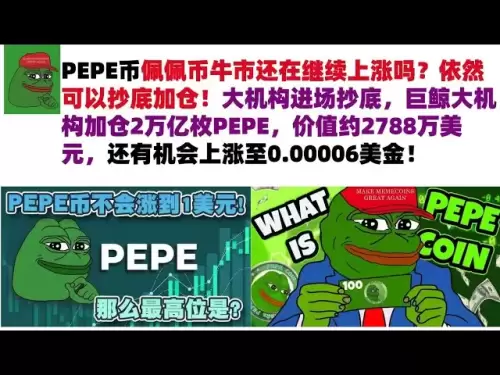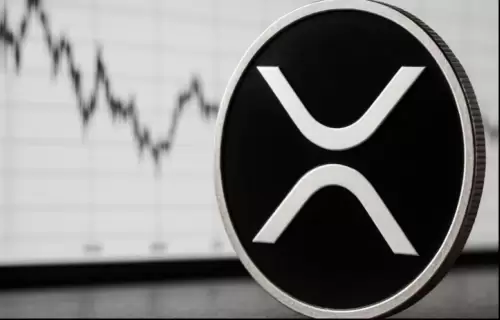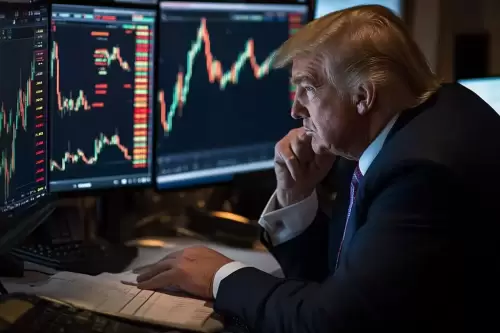 |
|
 |
|
 |
|
 |
|
 |
|
 |
|
 |
|
 |
|
 |
|
 |
|
 |
|
 |
|
 |
|
 |
|
 |
|
加密貨幣新聞文章
In a Dramatic Twist, Wall Street Has Defied Expectations, Clawing Its Way Back to Its Strongest Weekly Performance Since 2023
2025/05/02 01:11

Wall Street equities surprisingly rallied to their strongest weekly performance of 2023 despite a week marked by volatility, trade tension, and unsettling bond market behavior.
This rebound in equities stands in sharp contrast to the persistent instability across other key indicators, particularly in Treasuries and currency markets. Yet beneath the surface, uncertainty reigns, raising questions about how long this rally can truly last.
Lucas Morran, financial strategist at QuilCapital, examines how this fragile optimism may be masking deeper systemic strains and highlights what investors should prioritize as pressure mounts on policymakers and markets alike.
A Rally That Belies Deeper Market Turmoil
Friday’s stock market reversal caught many traders by surprise. The S&P 500 gained 1.2%, while the Nasdaq 100 advanced 1.3% and the Dow Jones climbed 1%, helping cement a potential end to a volatile week with the strongest equity rally since last year.
However, this recovery comes with caveats: investors are largely reacting to a pause in bond market chaos rather than any true easing of macroeconomic risks.
The 30-year Treasury yield, though slightly down by Friday, remains up by 45 basis points since the previous week, marking one of the most dramatic surges in borrowing costs since the pandemic. Meanwhile, the U.S. dollar hit a six-month low, signaling reduced investor confidence in the greenback’s safe-haven status.
Equity markets may be rising, but they’re moving in opposition to other asset classes—a divergence that hints at systemic stress rather than healthy optimism.
Image Credit: Canva
Trade Wars and Safe-Haven Doubts
Much of the market’s confusion stems from rapidly shifting U.S. trade policies. The latest round of tariffs—quickly imposed and then partially paused—has jolted global sentiment.
China responded by slapping increased tariffs on all U.S. imports, a move that could significantly impact bilateral trade flows and corporate revenues.
This response has had cascading effects. For instance, Tesla (TSLA) halted orders for its U.S.-manufactured Model S and Model X vehicles in China as the tariffs rendered them uncompetitive. Shares of U.S. chipmakers with domestic manufacturing also dived, underlining the tangible consequences of the escalating economic skirmish.
Even market veterans are drawing sobering comparisons. Some strategists warn that U.S. assets are behaving more like those from emerging markets than from a developed economy.
The erosion of the dollar’s strength, combined with the volatility in bond markets, has led some to question whether the U.S. can maintain its traditional role as the world’s financial anchor.
Sentiment Sours as Inflation Fears Rise
While markets wrestled with external pressures, internal data painted a bleak picture of consumer confidence. Surveys released on Friday revealed a sharp drop in consumer sentiment, fueled by a surge in long-term inflation expectations to multi-decade highs. Even before the policy shifts midweek, American households were already feeling the strain.
This erosion in confidence suggests that consumers are increasingly anxious about the future—not just because of headlines, but due to real economic pressures that affect spending, saving, and investing behaviors. For a consumption-driven economy like the U.S., this represents a major risk to continued growth.
Bond Market Panic and China’s Role
The bond market has been ground zero for this week’s financial turbulence. Rising yields on longer-dated Treasuries have unnerved analysts and investors alike. Theories are now circulating about China possibly selling U.S. debt, though evidence remains circumstantial. Still, the prospect of such action has rekindled old fears about geopolitical tensions translating into financial weaponry.
Adding to concerns, analysts are worried about a potential “kerfuffle” in the Treasury market—an unusual term used by a top bank executive to describe what might be a liquidity crunch or regulatory dislocation. Many now believe the Federal Reserve will be forced to intervene, but likely only after signs of more systemic stress emerge.
Barclays analysts echoed these concerns, noting that until Treasuries return to normal behavior, other risk assets such as equities are likely to remain fragile and prone to sharp swings.
A World Watching U.S. Policy Shifts Closely
The global ripple effects are already being felt. As the MSCI World Index rose 0.9%, international investors found themselves trying to navigate an increasingly chaotic landscape. While some saw opportunities in undervalued assets, many are adopting a defensive stance, moving capital into short-duration bonds or away from the U.S. altogether.
Two-year Treasuries are now being viewed as safer bets amid the uncertainty.
Strategists have recommended short positions on equities until the S&P 500 hits 4,800 points while advocating for long bets on shorter-dated debt instruments that carry less risk in turbulent environments.
Conclusion: Resilience or Reversal Ahead?
The sharp rebound in equities may offer a brief moment of relief, but it does little
免責聲明:info@kdj.com
所提供的資訊並非交易建議。 kDJ.com對任何基於本文提供的資訊進行的投資不承擔任何責任。加密貨幣波動性較大,建議您充分研究後謹慎投資!
如果您認為本網站使用的內容侵犯了您的版權,請立即聯絡我們(info@kdj.com),我們將及時刪除。
-

-

- XPFINANCE(XPF)令牌預售超過其軟上限的40%
- 2025-06-13 10:55:12
- 隨著加密貨幣市場情緒再次改變看漲,XRP繼續引起投資者的關注,穩步交易高於2美元的範圍。
-

-

- 下一個大加密硬幣的競賽即將開始。 Sui以2倍的突破來閃爍看漲信號。
- 2025-06-13 10:50:11
- SUI在6月初收回了其看漲軌跡後表現出強大的上升潛力。從四月的低點恢復超過120%之後
-

-

- 比特幣已經陷入了兩個多月的模式,但這可能很快就會改變
- 2025-06-13 10:45:11
- 在定義的範圍內合併(從$ 83K到$ 112K)之後,BTC看起來很準備進行突破性的舉動。
-

-

- 確保Web 3.0世界:從代碼審核到零信任體系結構
- 2025-06-13 10:40:11
- Web 3.0世界是由代碼和密碼學驅動的,區塊鍊是數字信任的象徵,數字信託是一個廉潔的分類帳,有望分散。
-

- 比特幣和以太坊正在騎馬的浪潮
- 2025-06-13 10:35:12
- 在2025年的第二季度(第二季度),比特幣和以太坊正在騎馬,這不是這些資產第一次顯示出令人鼓舞的結果





























































